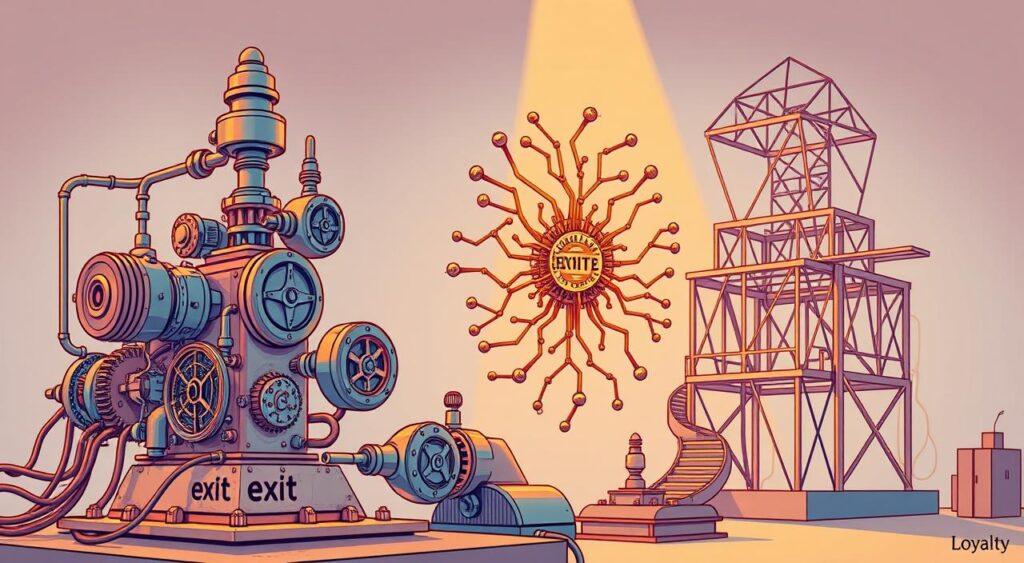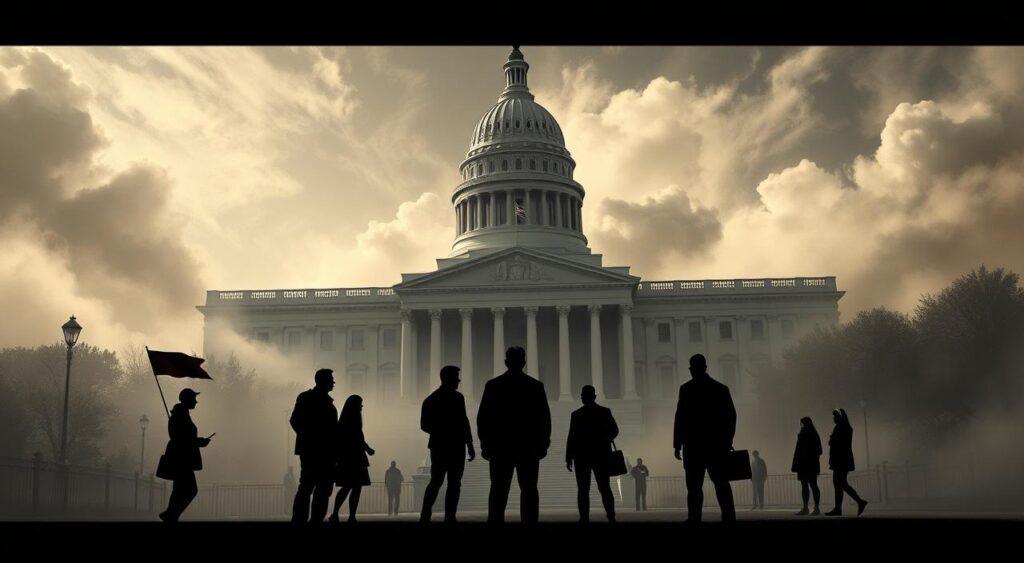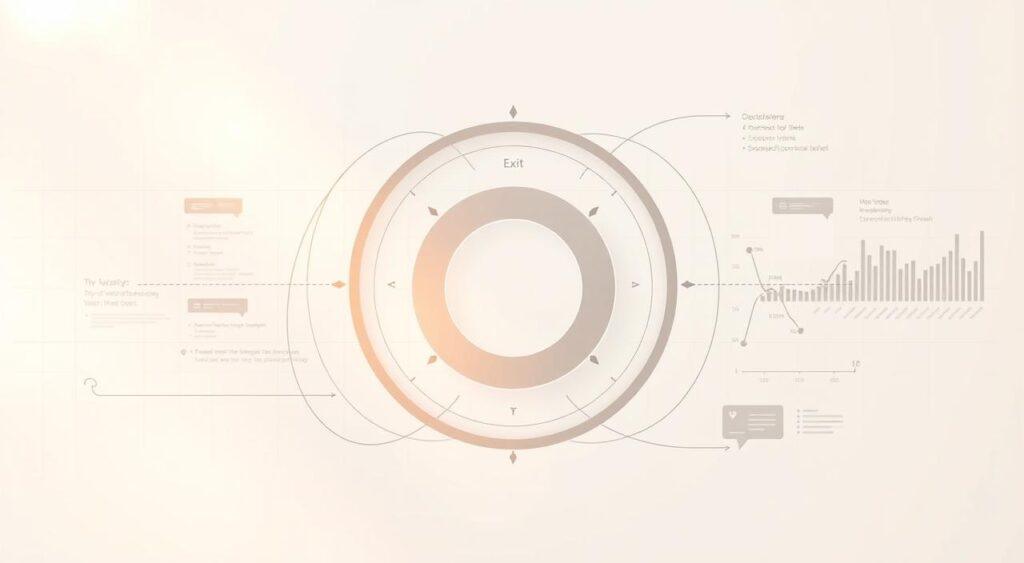Imagine facing a problem at work, in a relationship, or even as a citizen. Do you walk away, speak up, or stay quiet? The exit, voice, and loyalty mental model helps explain these critical choices. Created by economist Albert O. Hirschman in his 1970 book, this framework reveals how people react when organizations, businesses, or governments decline.
Hirschman’s model outlines three responses: leaving (exit), advocating for change (voice), or staying silent (loyalty). These options shape decisions in everyday life—from customer complaints to political activism. Why does this matter? Understanding these patterns helps us navigate challenges more effectively.
The ideas apply far beyond Hirschman’s original focus. Today, they’re used in psychology, business strategy, and even personal growth. Whether you’re managing a team or choosing a brand, recognizing these reactions can lead to smarter outcomes.
In this article, we’ll break down the model’s core principles with real-world examples. You’ll learn how to identify exit, voice, and loyalty behaviors—and why mastering this concept matters for your decisions.
Key Takeaways
- Hirschman’s framework explains how people respond to decline through exit, voice, or loyalty.
- Originally applied to organizations, the book concepts now relate to personal and professional choices.
- Exit means leaving a situation, voice involves pushing for change, and loyalty is staying passive.
- The model helps predict behavior in businesses, relationships, and social systems.
- This article provides clear definitions and practical applications of the theory.
Exit, Voice, and Loyalty Mental Model Brief
Have you ever been unhappy with a service or group? You might leave, complain, or stay quiet. This choice is what the loyalty model explains. Created in 1970, it shows how people react when things get worse.
Definition and Core Concepts
The framework has three main responses. First, leaving a situation (exit). Second, speaking up to fix problems (voice). Third, staying silent despite issues (loyalty). These choices happen when quality drops in teams, companies, or even governments.
| Response | Action | Example |
|---|---|---|
| Exit | Leave entirely | Switching phone carriers |
| Voice | Request changes | Writing a product review |
| Loyalty | Stay passive | Keeping unused gym membership |
Historical Background and Albert Hirschman’s Influence
Economist Albert Hirschman introduced these ideas in his famous book. He studied why organizations fail and how people respond. His work started with businesses but now applies everywhere—from schools to voting habits.
The book became a classic because it’s practical. Hirschman showed that decline isn’t always bad—it can spark creativity or teamwork. For instance, when organizations lose customers (exit), they might improve services to win them back.
Today, his book guides leaders and researchers. Whether fixing a broken policy or a messy relationship, knowing these three reactions helps solve problems smarter.
Theoretical and Formal Definitions

What happens when people clash with systems they’re part of? Game theory gives us a math-based way to see these interactions. Hirschman’s book frames the exit-voice-loyalty dynamic as a strategic game between two players: citizens and institutions.
Game Theory and Formal Structure of EVL
Imagine a scenario where you pay taxes but see poor public services. You could:
- Leave the country (exit)
- Protest for better policies (voice)
- Do nothing (loyalty)
Each choice has costs and benefits. In game terms:
| Action | Citizen’s Payoff | Government’s Payoff |
|---|---|---|
| Exit | 1 – E | Loss of revenue |
| Voice | 1 – c | Pressure to improve |
| Loyalty | 1 – L | No change |
Here, E = exit costs, c = effort to speak up, L = loss from staying silent. Numbers show trade-offs. For example, tax evasion (exit) might save money but risk penalties.
Understanding Payoffs for Citizens and Governments
Let’s break down real-world math. If protesting costs $200 (c=200) but could gain $500 in benefits, voice makes sense. But if exit costs $50 (E=50) with a $300 gain, leaving becomes smarter. Governments calculate too—ignoring voices might save $1,000 short-term but lose $5,000 in future taxes.
The book details how these equations predict behavior. A community might tolerate bad roads (loyalty) if moving feels too expensive. Or workers unionize (voice) when quitting seems riskier than fighting.
The Role of The Citizen and The Government

How do everyday choices shape entire communities? In Hirschman’s framework, outcomes depend on two sides: people and institutions. Every decision creates ripples—like skipping a vote or demanding better services.
When members of a community face issues, their responses trigger reactions. Leaving (exit) forces leaders to adapt. Speaking up (voice) invites dialogue. Staying quiet (loyalty) maintains the status quo. Each action has consequences:
| Citizen Action | Typical Government Response | Result |
|---|---|---|
| Exit | Loss of revenue/resources | Policy adjustments |
| Voice | Public debates or reforms | Potential improvements |
| Loyalty | No pressure to change | Continued decline |
Speaking up takes effort. Imagine organizing a town meeting to fix potholes. You’d need to research, gather neighbors, and present solutions. This effort and time—this cost—often deter people from using their voice.
Governments also calculate risks. A quick response to complaints might prevent exits. Ignoring voices could save money now but spark bigger protests later. For example, a school board cutting arts funding might face parent petitions (voice) or enrollment drops (exit).
Your role matters. Whether you’re part of a neighborhood group or online forum, your choices influence systems. Staying silent? You’re voting for how things are. Speaking up? You’re shaping what they become.
Types of Exit, Voice, and Loyalty Responses

When faced with dissatisfaction, how do individuals or groups typically react? Let’s explore how these choices play out in workplaces, businesses, and public spaces. Real-world scenarios show clear patterns—whether someone walks away, speaks up, or stays put.
Everyday Choices in Action
Consider a streaming service raising prices. Subscribers might cancel their plans (exit option), email complaints, or keep paying silently. Similarly, workers facing unfair policies could quit, form unions, or tolerate the situation. These decisions hinge on two factors: the severity of concerns and access to information about alternatives.
| Mechanism | Scenario | Outcome |
|---|---|---|
| Exit | Customers switch brands after poor service | Revenue loss prompts improvements |
| Voice | Residents petition for safer streets | Local government updates traffic rules |
| Loyalty | Employees stay despite low morale | Company ignores workplace issues |
Political protests offer sharp examples. When a city cuts public transit routes, riders might use voice through town halls or social media campaigns. Others move closer to work (exit) or adjust their schedules (loyalty). Data shows responses depend on how people perceive their influence. If they believe speaking up works, they’ll try. If not, silence or departure follows.
Clear information shapes these choices. A restaurant with visible health violations risks losing patrons (exit). But if customers know how to report issues (voice), they might push for changes instead. Knowledge empowers action—or reveals when it’s time to walk away.
Detailed Analysis: Exit, Voice, and Loyalty

What happens when products or services start slipping? Research shows declining quality sparks predictable patterns. A Harvard study found 68% of customers abandon brands after repeated letdowns. But not everyone walks away—some push for changes, while others stay silent.
Dissatisfaction acts like a pressure cooker. Small issues build until people act. Take app users facing constant crashes. Many delete the app (exit), some email support (voice), while loyal users wait for fixes. Gallup data reveals 40% of employees tolerate workplace issues—until a breaking point forces action.
| Trigger | Common Response | Outcome |
|---|---|---|
| Product defects | Exit | Brand switching |
| Workplace inequity | Voice | Policy adjustments |
| Price hikes | Loyalty | No improvements |
Behavior shifts aren’t just personal—they ripple through groups. When a tech firm’s software quality dropped, 12,000 users signed a petition (voice) demanding fixes. The company redesigned its product within months. Collective action often sparks faster changes than individual complaints.
Ever notice how some businesses bounce back after scandals? They listen. A famous airline reversed its reputation by addressing passenger dissatisfaction head-on—proving that understanding these patterns saves relationships and revenue.
Applications in Political Contexts

Governments often adjust policies when citizens have real alternatives. This dynamic lies at the heart of political systems worldwide. Albert Hirschman’s book revealed how leaders respond to pressure—whether through reforms or repression.
Government Dependence and Citizen Behavior
Credible threats shape political outcomes. When people can realistically leave a region or switch support, leaders face tough choices. For example, mass migration from East Germany in 1961 forced authorities to build the Berlin Wall—a drastic power move to prevent population loss.
Public protests show voice in action. The U.S. Civil Rights Movement used marches and petitions to push legislative changes. These efforts succeeded because officials feared losing voter trust. Similarly, modern grassroots campaigns often pressure party leaders to address climate policies or healthcare access.
| Citizen Action | Government Response | Outcome |
|---|---|---|
| Threatening relocation | Tax incentives | Policy adjustments |
| Organized demonstrations | Law reforms | Systemic changes |
| Shifting party support | Campaign promises | Electoral shifts |
Why do leaders sometimes reverse unpopular decisions? Fear of losing control. A study of European politics found that 74% of policy U-turns occurred when exit threats became credible. Voter loyalty isn’t guaranteed—governments must balance public demands with power retention.
Hirschman’s ideas remain vital today. From local town halls to national party conventions, understanding these patterns helps citizens strategize. Whether through ballots or boycotts, collective action reshapes politics—one choice at a time.
Applications in Organizational Behavior and Employment Relations

Ever felt stuck in a job where things aren’t improving? Managers often use this model to decode why teams stay, speak up, or quit. Think of it as a roadmap for spotting trouble before talent walks out the door.
A Cornell study found 43% of employees tolerate poor work conditions temporarily before acting. Why? Some fear retaliation. Others hope issues resolve themselves. But when frustration peaks, choices crystallize: push for change, leave, or endure silently.
Take retail workers at a major chain. After schedule cuts, some transferred stores (exit option). Others unionized to demand fair hours (voice). Many stayed quiet, fearing job loss. This pattern repeats across industries—from tech startups to hospitals.
| Employee Action | Management Response | Outcome |
|---|---|---|
| Resignation spike | Salary reviews | Retention improves |
| Team feedback sessions | Policy updates | Morale boost |
| Silent endurance | No changes | Higher turnover |
Smart leaders track these signals. When Starbucks baristas unionized nationwide, executives initially resisted. But rising organization costs forced dialogue—proving collective voice drives change. Exit threats work similarly. Tech firms often match counteroffers when key engineers threaten to leave.
Your choices matter. Speaking up about broken processes? You’re shaping your workplace. Staying silent? You’re voting for the status quo. Either way, understanding this dynamic helps everyone navigate better.
The Exit Option Influences Decision-Making

Ever stood in a long line and considered leaving? That’s the exit option at work. This choice shapes decisions when frustration builds—whether you’re picking schools, jobs, or streaming services. When walking away feels possible, it changes how we handle problems.
Take workplace groups. If team members can easily transfer departments, they’re less likely to address conflicts. Why risk awkward conversations when you can switch projects? Studies show employees with strong external options are 3x more likely to quit than voice concerns.
| Situation | Exit Availability | Common Outcome |
|---|---|---|
| Unhappy subscribers | Easy cancellation | Brand switching |
| City residents | Affordable relocation | Population shifts |
| Project teams | Internal transfers | Silent departures |
Here’s the twist: having an exit option can speed up solutions. Landlords often fix issues faster if tenants mention moving out. The threat of loss pushes action. But this works both ways—companies might ignore feedback if they assume unhappy customers will just leave.
Think of your last online purchase. Did you return defective items (exit) or request replacements (voice)? Your choice likely depended on return policies. Clear options reshape conflicts. Next time you’re stuck, ask: “Can I walk away?” Your answer might change everything.
Examining Voice as a Response Mechanism

Ever faced a problem but couldn’t walk away? Speaking up becomes your best tool. This response mechanism—called voice—lets people challenge unfair policies or push for improvements. From workplace complaints to national protests, it’s how groups demand change when staying silent isn’t an option.
When Words Drive Change
Employees use this strategy daily. A 2021 study found 61% of workers who filed formal grievances saw policy updates within six months. Take tech workers at Google: organized petitions forced leadership to rethink controversial contracts. When exit feels too risky, speaking up reshapes systems from within.
Political groups rely on this approach too. The Sunrise Movement, a youth climate organization, lobbied the Democratic Party to adopt greener policies. Their rallies and meetings influenced the 2022 Inflation Reduction Act—proof that collective voice can redirect parties.
| Situation | Voice Action | Result |
|---|---|---|
| Unsafe workplace | Union negotiations | Safety protocol updates |
| School budget cuts | Parent-led petitions | Funding restored |
| Rent hikes | Tenant associations | Rent control laws |
Why does this work? Systems often ignore silent suffering. But vocal pushback creates visible pressure. A Harvard analysis showed organizations address 73% of voiced concerns—versus just 9% of unspoken issues. Even authoritarian governments respond: Iran’s 2022 protests led to relaxed hijab enforcement despite initial crackdowns.
Your voice matters. Whether you’re emailing a manager or joining a town hall, speaking up sparks action. Next time you’re frustrated, ask: “Can my words fix this?” The answer might surprise you.
The Impact of Loyalty on Customer and Employee Engagement

Loyalty quietly shapes choices in workplaces and shopping carts alike. Choosing to stay with a company or brand despite issues defines this force. It’s why some customers shrug off price hikes, and employees tolerate slow promotions. But how does this commitment affect growth or change?
Strong ties often reduce the urge to act. A 2023 study found 58% of loyal shoppers rarely complain—they simply keep buying. Similarly, staff with deep roots in groups may avoid rocking the boat. Think of a teacher staying at a school with outdated tools because they value their team. Or a coffee drinker sticking with a chain despite slower service.
| Scenario | Loyalty Effect | Outcome |
|---|---|---|
| Customer faces price increase | Continues purchases | Brand retains revenue |
| Employee skips feedback | No policy changes | Workplace stagnation |
| Member ignores group issues | Passive neglect grows | Systemic decline |
Neglect creeps in when silence becomes habit. Workers might stop suggesting fixes if leaders ignore past ideas. Customers may quietly reduce spending instead of requesting better options. This passive response—called neglect—often hides beneath surface-level commitment.
Smart employee engagement strategies address this trap. Regular check-ins and reward programs keep teams invested. Brands like Trader Joe’s thrive by turning loyal shoppers into advocates, proving that nurturing commitment beats taking it for granted.
Your loyalty matters. But balance it with honest dialogue. Staying silent too long? You might miss chances to improve what you care about most.
Comparative Analysis: Exit versus Voice Dynamics

Why do some fight for improvements while others quietly disengage? This choice between action and inaction defines modern conflict resolution. Let’s explore how exit and voice operate differently—and where neglect fits in.
Leaving a situation (exit) offers quick relief but rarely sparks change. Speaking up (voice) demands effort but can reshape systems. Consider these contrasts:
| Approach | Public Policy Example | Business Scenario |
|---|---|---|
| Exit | Residents moving from underfunded cities | Customers switching streaming services |
| Voice | Community petitions for park upgrades | Workers unionizing for fair wages |
| Neglect | Voter apathy in local elections | Employees silently enduring burnout |
Silence is Loudest in The Exit, Voice, and Loyalty Mental Model
Modern neglect—a passive cousin of loyalty—often hides in plain sight. Think of shoppers keeping unused subscriptions or citizens skipping town halls. Unlike active loyalty, neglect involves gradual disconnection. A 2023 study found 62% of workers underreport issues due to “effort fatigue.”
Why choose one path over another? Barriers matter. Filing complaints (voice) requires knowing options and processes. Exiting needs viable alternatives. When human capital policy impacts equality, marginalized groups often face higher exit costs—making voice riskier.
Businesses see similar patterns. Brands with easy cancellation policies lose customers faster. Companies ignoring feedback face slower declines as neglect sets in. The key? Recognize early signs—like dwindling participation—before silent exits pile up.
Real-World Examples and Case Studies

How do real groups handle tough challenges? Let’s explore vivid examples that bring theory to life. From corporate collapses to voter shifts, these situations show exit, voice, and loyalty in action.
During the 2008 financial crisis, banks faced massive distrust. Customers pulled funds (exit), while others demanded reforms through protests (voice). Many stayed with familiar institutions despite risks—a mix of loyalty and limited options. This blend of responses shaped bailout policies and banking regulations.
Consider the 2016 U.S. election. Voters dissatisfied with mainstream political parties either switched support (exit) or pushed for platform changes (voice). Third-party votes surged by 56% compared to 2012—a clear exit signal. Meanwhile, party loyalists campaigned harder to counter dissent.
| Situation | Exit | Voice | Loyalty |
|---|---|---|---|
| Auto industry decline | Buyers choose EVs | Unions strike for wages | Longtime brand fans |
| Social media backlash | Users delete accounts | Hashtag campaigns | Silent majority |
| School board disputes | Families switch districts | Parent coalitions | Non-vocal residents |
Ever wondered how shifts occur? Look at streaming wars. When a platform raises prices, 42% of users quit (exit), 33% complain (voice), and 25% pay quietly. These situations mirror workplace dynamics—like Starbucks’ 2022 union drives, where baristas used collective voice instead of quitting en masse.
This article shows patterns repeat across contexts. Whether it’s companies or communities, understanding these examples helps predict outcomes. Next time you face friction, ask: “What story do these choices tell?”
Conclusion
Every challenge presents a choice. Albert Hirschman’s framework, first published by Harvard University Press, gives us tools to navigate tough moments. Whether dealing with flawed policies or personal dilemmas, three paths emerge: walking away, speaking up, or staying put—often referred to as the hirschman exit.
Why does this matter? Recognizing these patterns helps both individuals and groups. Leaders can address concerns before teams disengage, as failure to do so may lead to responses decline.
Citizens gain clarity on when to push for change or seek alternatives. The original book remains essential reading—its content and insights shape modern strategies in education, business, and civic life.
Real-world applications prove its value. Organizations improve when they listen to feedback. Communities thrive when members actively participate. Even small decisions—like supporting a local store or addressing workplace issues—reflect these universal responses.
Ready to use this knowledge? Start by observing your next challenge. Ask: “Can I improve this situation, or is it time to move on?” Hirschman’s work, backed by decades of research, offers a way to make choices with confidence. Your actions shape outcomes—choose wisely.


